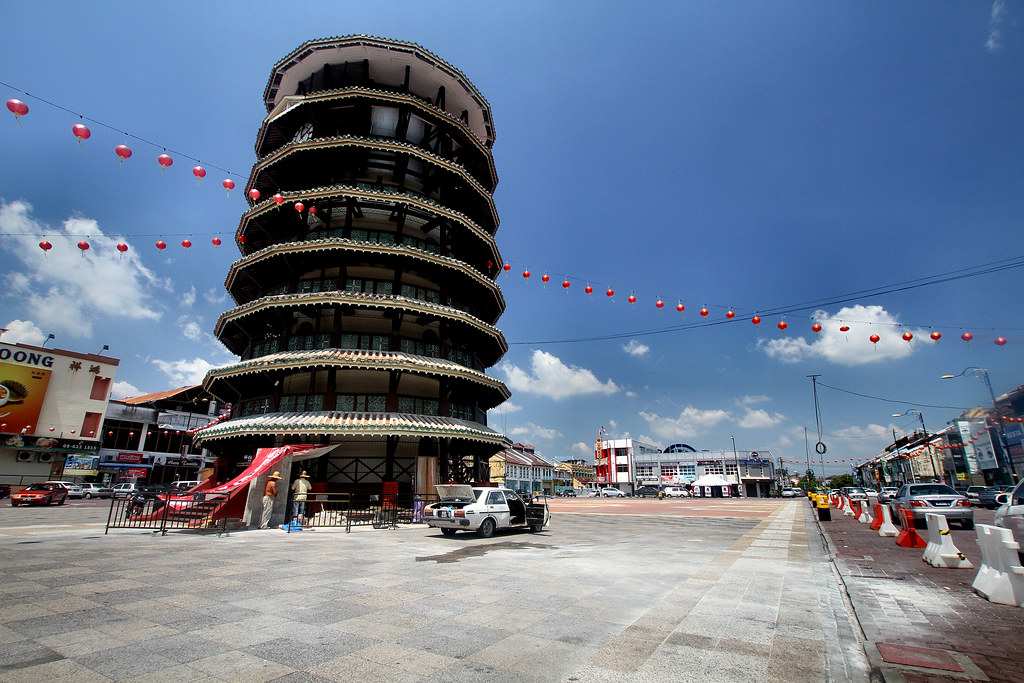The tower was built in the year 1885 by Leong Choon Chong, a Chinese contractor and was originally used as a water tank to store portable water during the dry season for the people living nearby and in case of fires. It is also used as a timekeeper of the town as there is a huge clock on top of the tower. The clock was made by J.W. Benson of Ludgatehill London and the cost of building it was contributed by the local people.
 The pagoda style structure has been greatly influenced by Chinese architecture because the majority of the population of the town at that time was Chinese. The tower is 25m high and, from the outside, looks like an 8 storey building, though inside it is actually divided into 3 storeys, each floor is 5 meters high and there are a total of 110 steps from the ground floor to the top of the tower.
The pagoda style structure has been greatly influenced by Chinese architecture because the majority of the population of the town at that time was Chinese. The tower is 25m high and, from the outside, looks like an 8 storey building, though inside it is actually divided into 3 storeys, each floor is 5 meters high and there are a total of 110 steps from the ground floor to the top of the tower.
The water tank, which is 5 metres high and 18.36 cubic metres deep, is on the third floor and is made of steel. The foundation is 13 metres in diameter and tapers to a diameter of 8.2 metres at the top of the tower. The tower is built of cengal (Neobalanocarpus heimii) wood facade and brick interior.
 After only 4 years of construction, the tower began to tilt like the Leaning Tower of Pisa due to the weak ground and the water tank on the 3rd floor that caused the volume of the tower to be deflected.
After only 4 years of construction, the tower began to tilt like the Leaning Tower of Pisa due to the weak ground and the water tank on the 3rd floor that caused the volume of the tower to be deflected.
After Malaysia’s Independence Day in 1957, the tower became an official national monument and no longer stores water, but the clock is still chimes on the dot every 15 minutes.
According to Wikipedia, malaysiavacationguide.com and airasia.com













